Bilio Mask is a company receiving a lot of attention recently. Initially known for its Koala masks, it has recently launched the Kangaroo, which introduced replaceable filters. This was a heavily requested addition, and I’ve been looking forward to introducing my Kangaroo mask review.
While the Kangaroo from Bilio has a range of exciting features, the key selling point of Bilio devices is the unique Antimicrobial SilverKiss™ technology that is incorporated into the mask. In Bilio’s words, this technology prohibits microorganism growth, controls odour, and eliminates bacteria on contact.
While other masks have implemented similar features – Craft Cadence with ViralOff and StaysFresh, and Naroo Mask with copper-infused materials are two – it’s always interesting to see the efficacy of new technologies.
On top of this, the masks are designed to be environmentally friendly and easily wearable. By allowing users to replace the wire nose piece and creating the mask out of recycled yarn, Bilio aims to provide a sustainable alternative to disposable masks.
While many companies are currently striving to provide more sustainable masks, I have yet to find a good alternative. I’ve been interested in trying Bilio Masks for a long time for these reasons and more. But, unfortunately, I never got the chance to try the Koala due to shipping restrictions.
Now that I finally can experience a mask from Bilio, I’m curious to see why they are as popular as they are. I’ve had many requests to review the Koala. While I, unfortunately, have yet to try that mask, I am happy to finally be able to share my review of the most recent Bilio Mask – the Kangaroo!
Before I jump into my full review of the Kangaroo mask from Bilio, I want to set a few things straight.
- Masks are only effective if fitted correctly. A mask that isn’t fitted correctly can leak and allow unfiltered air to pass through.
- The test results mentioned in this post apply to the filter media (unless otherwise stated) rather than the mask itself.
- All thoughts mentioned under the ‘fit’ section are based on my experiences. I can’t determine if a mask will or will not fit you. Instead, I can only make observations from my own experiences.
This post contains affiliate links. For more information, please refer to my affiliate disclaimer. I was NOT sent a product for review; I purchased this monitor myself. All opinions expressed in this post are my honest thoughts. I only recommend products that I believe in.
Information on this blog is for informational purposes only. Readers are encouraged to confirm the information herein with other sources. Furthermore, this information is not intended to replace medical advice from professionals. This website assumes no responsibility for the accuracy of the information, which is subject to change without notice. Devices mentioned on this website are not medical devices and do not guarantee protection.
Filtration
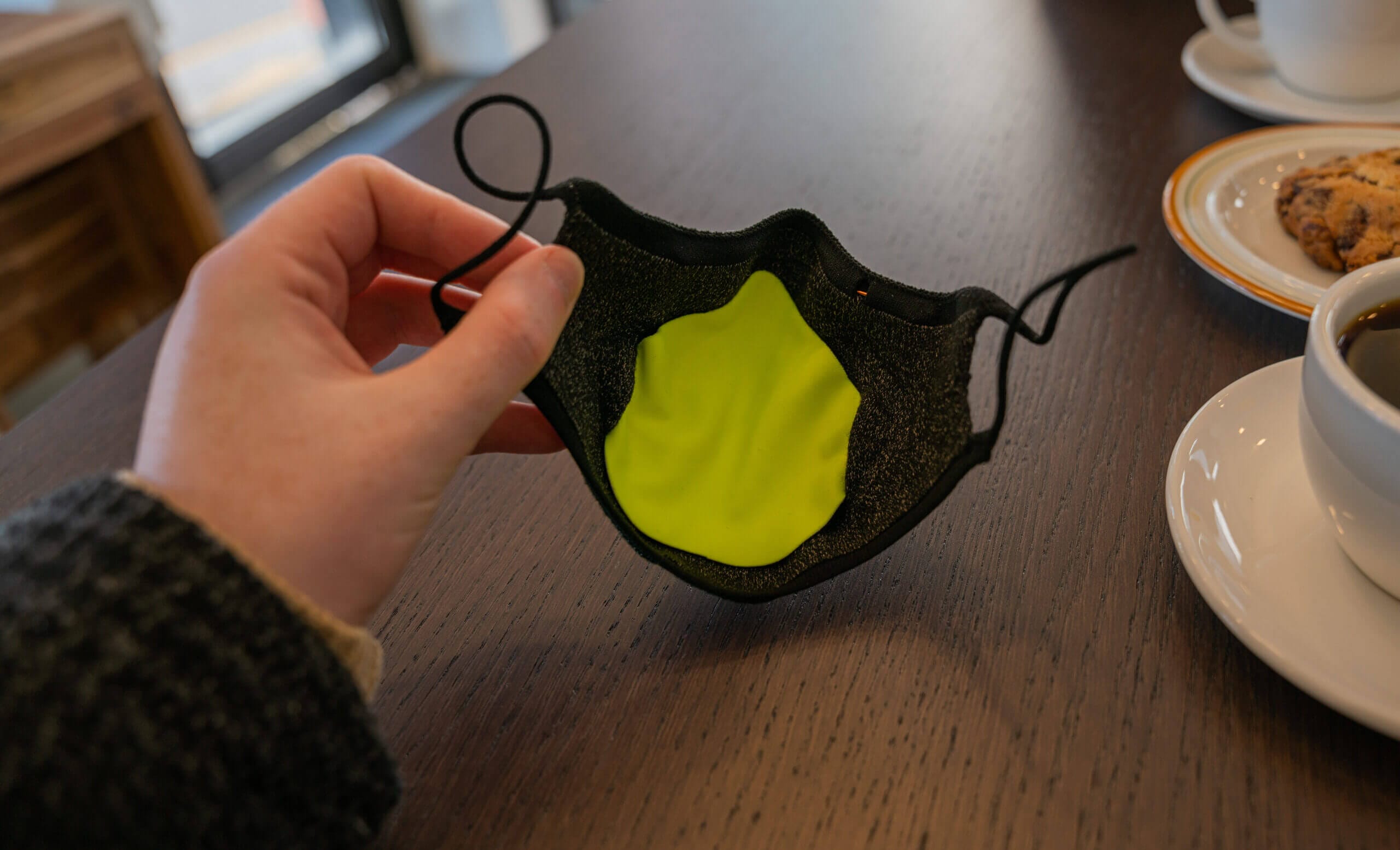
Before diving into the filtration capabilities of Bilio’s Kangaroo mask, it’s important to reemphasise that these results only apply when the mask is fitted correctly with no leaks.
Further, the filtration testing was carried out on the filter media rather than the mask itself. This means that the filter must be fitted correctly for these theoretical capabilities to be reached, and air must pass through the filter media. On Bilio’s Kangaroo mask, I found this to be an issue. I will discuss this in more detail later in this section.
The Kangaroo from Bilio Mask is a reusable device that uses small filter inserts aptly named Joeys. These inserts come in three different forms – Airflow, Silverflow, and Carbonflow. Each of these filters slots into the centre of the mask and can be easily added and removed.
These filters are all based on the same design, with the AirFlow being the standard filter. SilverFlow adds a silver layer to the filter for odour and bacteria reduction. CarbonFlow adds an activated carbon layer that also features infused silver. The filters increase in price, with the Airflow being significantly cheaper than the Silverflow, which is more affordable than the Carbonflow.
| Filter Type | Features | Price (x6) |
|---|---|---|
| AirFlow | Standard filter | $10 |
| SilverFlow | Added silver layer * | $16 |
| CarbonFlow | Added carbon filtration | $24 |
The filter media used in the Airflow filter has been tested by Intertek and SGS. Particle filtration efficiency testing carried out by SGS used a sample of five pieces of filter media. These pieces were exposed to particles at 0.1μm at a flow rate of 28L/min.
Across the five samples, the lowest recorded filtration efficiency was 82.55%. However, the average filtration was slightly higher at 84.43%. This puts the mask on a similar level (regarding filtration) with the FFP1, KF80 and P1 standards.
BFE (bacterial filtration efficiency) testing was also carried out on five samples. These particles had a mean particle size of 2.77μm and were tested at a flow rate of 28L/min. The average filtration across the samples was 89.8%.
| PFE Filtration (avg) | PFE Filtration (low) | BFE Filtration (avg) | BFE Filtration (low) |
|---|---|---|---|
| 84.43% | 82.55% | 89.8% | 86.03% |
The lab also carried out breathability testing. Across the three samples, breathability (differential pressure) averaged 25.2mm H2O at a flow rate of 28.3L/min and 5.5mm H2O at 8L/min.
- 8L/min: 5.5∆P (mm H20/cm2)
- 28.3L/min: 25.2∆P (mm H20/cm2)
But what does this mean? Well, N95 respirators are required to have inhalation resistance lower than 35mm H2O and exhalation resistance lower than 35mm H2O at a flow rate of 85 L/min. This means that while the AirFlow filter has high breathability at low flow rates, the breathability quick drops as resistances greatly increase.
In terms of real-world usage, this will mean that the mask is highly breathable for standard day to day activities. However, when you are inhaling and exhaling more air, such as when exercising, the breathing resistance will drastically increase. While this isn’t unusual – resistances will inherently increase as flow rate increases – the 25.2mm H2O at 28.3L/min is surprisingly high.
For context, this breathing resistance is more than double many common N95 respirators that were tested at a far higher flow rate (85L/min) (source). Therefore, while the Kangaroo mask is comfortable during times of low breathing rates, it’s definitely not a mask designed to be worn during exercise. Even a standard 3M N95 respirator will provide far lower breathing resistance in these situations.
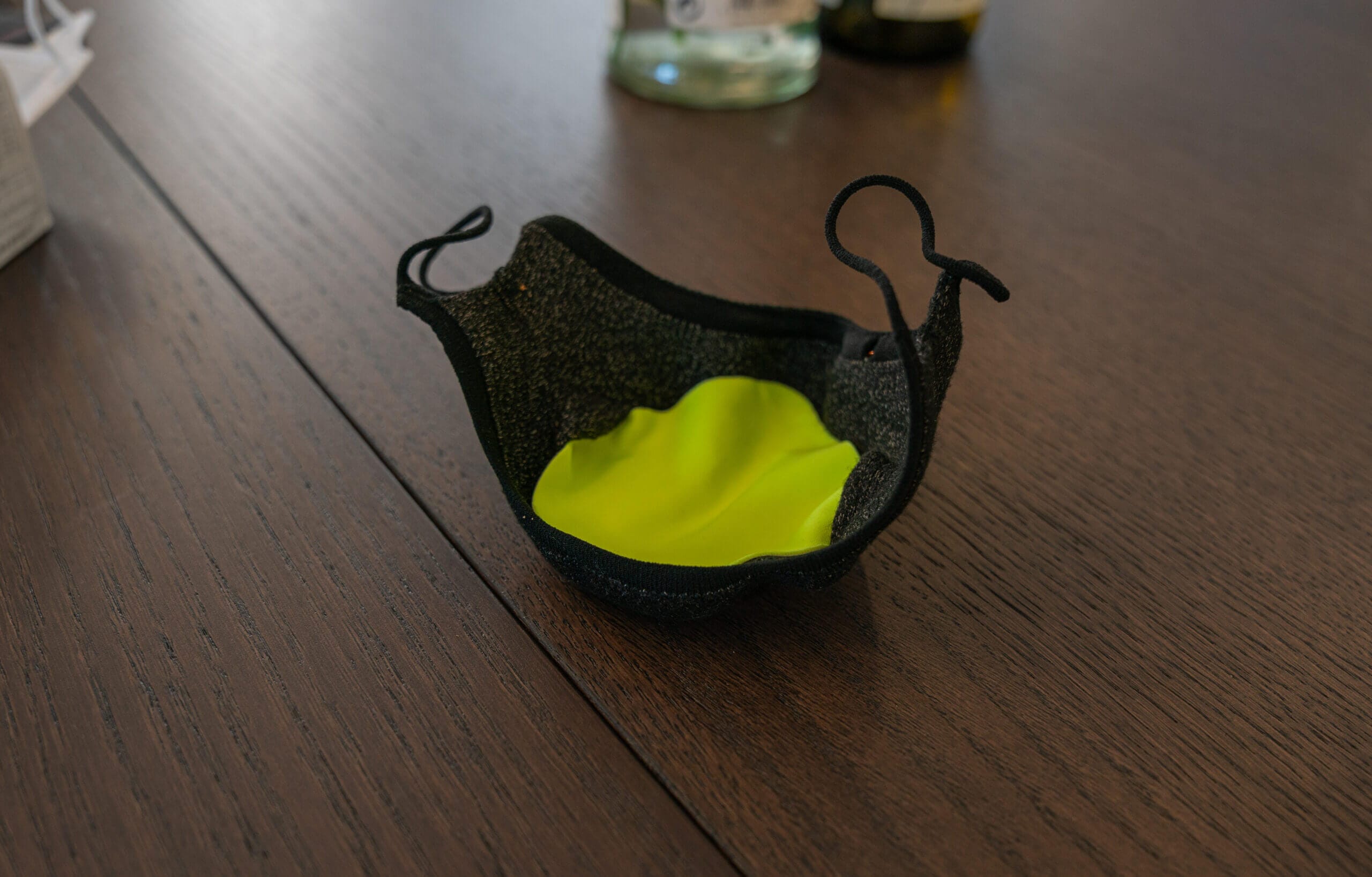
At the start of this section, I also alluded to another issue I noticed while using my Kangaroo mask. That is the actual fitting of the filter. Despite using the mask for over a week, I’ve never felt confident in the device.
The filter is a pentagon that is intended to slip into the mask and stay in place with two slots on the left and right of the mask. In the pictures provided on Bilio’s website, this filter sits flat and fits well. However, from my experience, I’ve never been able to get the filter to sit flat.
The filter regularly crumples and leaves many air pockets where unfiltered air can pass through. I’ve tried everything that I can think of to get the filter to fit correctly. But, unfortunately, no matter what I try, it keeps bending and deforming.
It feels almost as though the filter is too big or the mask too small. However, I encountered this issue even using the filter that Bilio included with the mask. I find it hard to trust the mask with this issue as it’s not difficult for air to bypass the filter entirely around the edges.
I’m unsure if this is an issue that only I have faced or a common issue. While there are plentiful Bilio Mask reviews online, I couldn’t find any for the Kangaroo in particular. As such, I would love to hear the experiences of others who have worn the mask – does the filter sit properly in the mask?
Looking past the ill-fitting filter, Bilio’s Kangaroo Mask is surpassed by most of the competition. The vast majority of masks I have reviewed on this website offer filtration > 95%. On top of this, many offer BFE filtration surpassing 99%.
While you could argue that comfort (in the form of breathability) is equally as important in daily life, the Kangaroo Mask also doesn’t excel in that respect either. Typically, lower filtration leads to an increase in breathability. However, pressure drop on the Kangaroo mask greatly increases with this mask for anything above a resting breathing rate.
Learn More and Purchase Bilio Mask
Fit
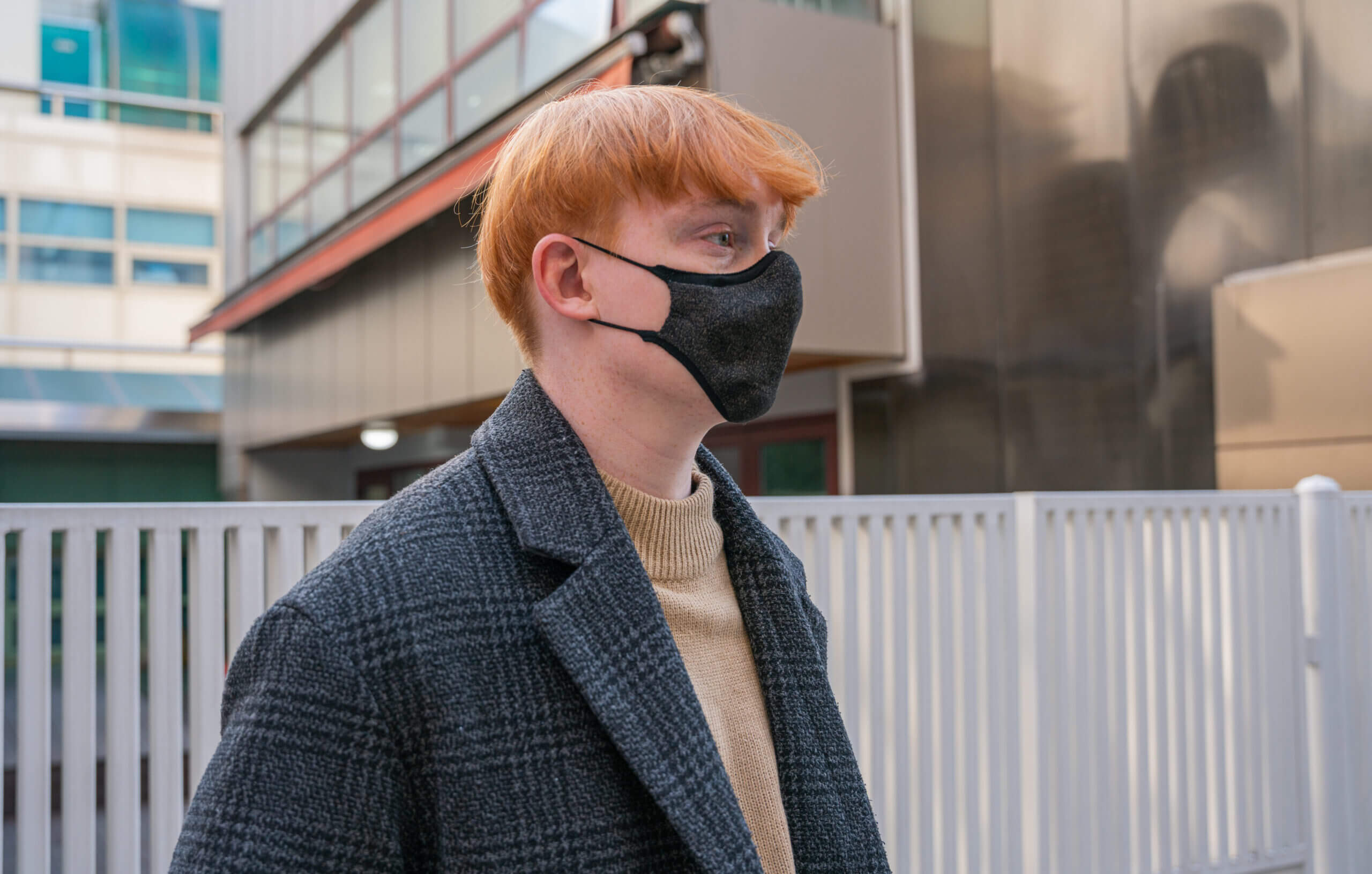
While the fit of a mask is often considered second to filtration, it’s an equally important pillar of any mask. If a mask doesn’t fit properly, filtration is irrelevant as air isn’t required to pass through the filter. As such, it’s vital to consider these two factors alongside each other.
My usual disclaimer applies here. The fit varies hugely from one individual to the next, and this section is based on my experiences. Due to the incredible range of facial features that we have, I can’t predict whether or not a mask will fit you. Instead, I’ve made observations based on my time with the device.
Bilio’s Kangaroo is intended to be used alongside a headband (Boomerang) attachment. Although the extra accessory is not included in the base mask package, it is mentioned on the website that customers should use the Kangaroo Mask with this accessory.
From my experience, the head strap is a significant improvement over the standard fit. Unfortunately, the earloops themselves offer no adjustment, making it hard to fit the mask without the headband correctly. While the earloops can be modified with a bit of DIY, I wish Bilio had included some form of adjustment toggle.
The headband attachment makes the mask adjustable and improves the device’s comfort by alleviating much of the pressure behind the wearer’s ears. However, more on the comfort later!
Besides the earloop/headband combination, the Kangaroo mask relies on an extended wire nosepiece to seal around the wearer’s nose. This piece of wire is long and reaches almost to the end of the mask, leaving about an inch of the mask on either side uncovered by wire.
This long piece of wire is sturdy enough to hold its shape but not overly strong to the point where I can’t adjust it properly. From my experience, I would argue that this is both the perfect length and malleability for a wire nosepiece.

Regarding leakage, I found that the top of the mask sealed well. While leaks occasionally occurred, these were quickly and easily removable with a few minor adjustments. Overall, I found the wire nosepiece to provide a good seal over the bridge of my nose and cheeks.
I encountered more leaks around the bottom of the mask, specifically along my jawline. When I wore the mask with only the earloops (unmodified), I found that exhaled air regularly escaped from the bottom of the mask. While I didn’t notice any obvious inhalation leaks around the mask’s base, this wasn’t confidence-inspiring.
I discovered that this leakage around the bottom of the mask was greatly minimised and often even removed altogether with the usage of the headband accessory. While the earloops alone were too loose on me to prevent exhaled air from leaking, the headband allowed for a tighter fit.
With the headband in use, leakage around the bottom of the mask was greatly decreased, and I felt a lot more confident in the fit of the device. While leaks around the bridge of my nose would occur at times, these were usually quickly fixable.
Overall, the fit of the Kangaroo Mask from Bilio Mask was good – however, only with the head strap accessory. While it’s possible to tighten the earloops to achieve the same fit, this quickly becomes uncomfortable due to the pressure placed on my ears.
For this reason, I agree with Bilio Mask that the headband is an essential accessory. However, I wish they would include it with the base version of the mask, as I believe many people will forego the addition and see it as non-essential.
Learn More and Purchase Bilio Mask
Comfort

If the Kangaroo mask from Bilio excels in one area, that is comfort. The mask benefits significantly from a very lightweight design that makes it easy to wear for long and short periods. The lightweight design reminds me of Happy Masks.
Perhaps the most important aspect of comfort is breathability. I already discussed breathability in more detail in the filtration section of this article, and there I said that the breathability was higher than many competing masks. While this is true, the Kangaroo mask is still very breathable at lower flow rates.
Further, while having more breathing resistance than masks such as AirPop’s Light SE and Happy Masks nanofibre mask, my experiences with the Kangaroo Mask were fine. While the breathability quickly decreases at higher flow rates (such as when exercising), under normal circumstances, the breathability of the mask was acceptable to good.
Secondly, the earloops and headband must be discussed. When worn without the headband accessory, the mask is comfortable on the ears even after long periods of wear. While the earloops initially worried me due to how thin and small they are, the mask is light enough that the earloops remain comfortable on my ears.
Of course, this is also partly due to the fact that the earloops without additional adjustment are pretty loose. When I added a toggle for a better fit, the earloops became much less comfortable as I tightened the straps.
This is another reason why I believe the headband is an essential accessory. Most of the pressure was alleviated from my ears when used with the band. While there was still some strain on the top of my ears, there wasn’t the all-to-common pain behind my ears from tight straps.
The mask has a sturdy outer shell, preventing it from interfering with breathing and speaking. While it takes some shaping initially, the mask can be shaped so that it doesn’t suffer from filter collapse and interfere with breathing and speaking.
However, with that being said, I did find that the filter could get in the way of speaking occasionally. As I mentioned earlier, I had difficulty getting the filter to stay in place and not crumple – especially when donning and adjusting the mask.
This led to the filter sometimes popping out of the slot or bending and interfering with talking. While this in itself wasn’t a big issue, as the situation was uncommon, the fact that the filter provided little protection during these occasions was a worry.
I tested the mask during winter, and I found that the mask didn’t have an uncomfortable microclimate within. Some masks become extremely hot, humid, and uncomfortable when being worn. Luckily, the Kangaroo mask did not have such issues. While I haven’t tested the mask during summer, I could see it being comfortable even during hotter times.
Learn More and Purchase Bilio Mask
Price & Lifespan
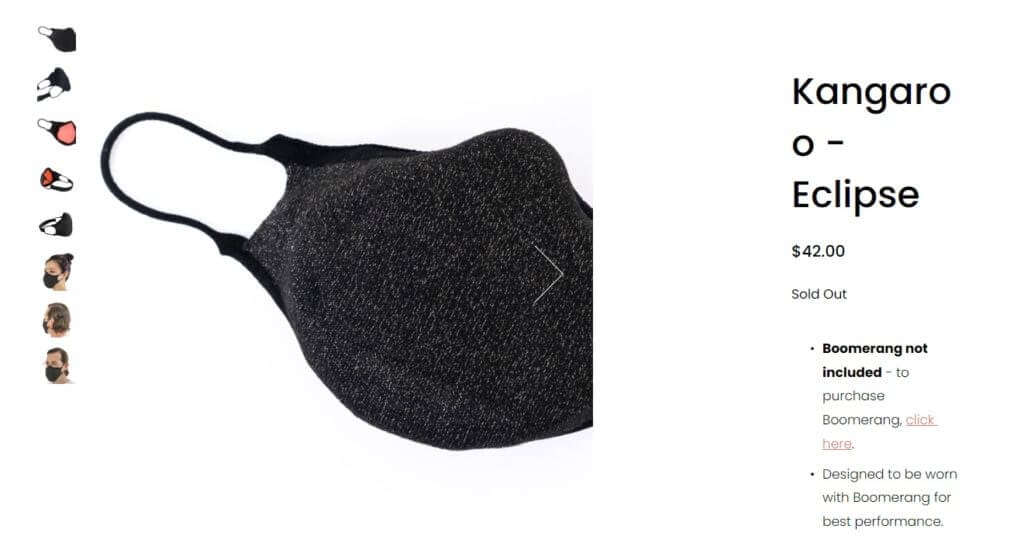
The upfront cost for the Kangaroo is $42. This price includes the mask itself and a single AirFlow filter. The Boomerang headband accessory is available for a further $12. I would highly recommend picking up the Boomerang or using a third-party headband accessory. That brings the total cost to $54.
However, realistically you will need to purchase additional filters with the mask. One filter is only enough to last for a few days, and then you will be in need of replacements. As such, the initial cost is more realistically $54 + the filter pack that you decide best for you.
Replacement filters are purchasable in packs of six. Depending on the filter you are interested in, prices start at $10 and go all the way to $26. Compared to other replaceable filter masks on the market, these filters (especially the AirFlow filters) are more affordable than most competitors.
| Filter Type | Price (x6) |
|---|---|
| AirFlow | $10 |
| SilverFlow | $16 |
| CarbonFlow | $24 |
$26 for six CarbonFlow filters is still relatively affordable on a per filter basis than many other reusable masks on the market. This is mainly because the filters are smaller and require less filter media per filter.
Bilio recommends that each filter be used for 3-4 days. This is presumably based on an eight-hour day in moderate conditions. However, more frequent replacements may be necessary on days with exceptionally high pollution concentrations.

While some people will be interested in the addition of silver and carbon to the filters, I personally would stick to the AirFlow filters for air pollution protection. While the addition of carbon is useful in removing some unwanted odours and bacteria, the price more than doubles from the original filters.
However, no matter which filters you decide to purchase, the Kangaroo should come in cheaper in the long run. $26 per filter for the CarbonFlow comes out to $4.33 per filter. Since each filter can be used for three or four days, this price will come out cheaper than using disposable masks every day.
Learn More and Purchase Bilio Mask
Conclusion
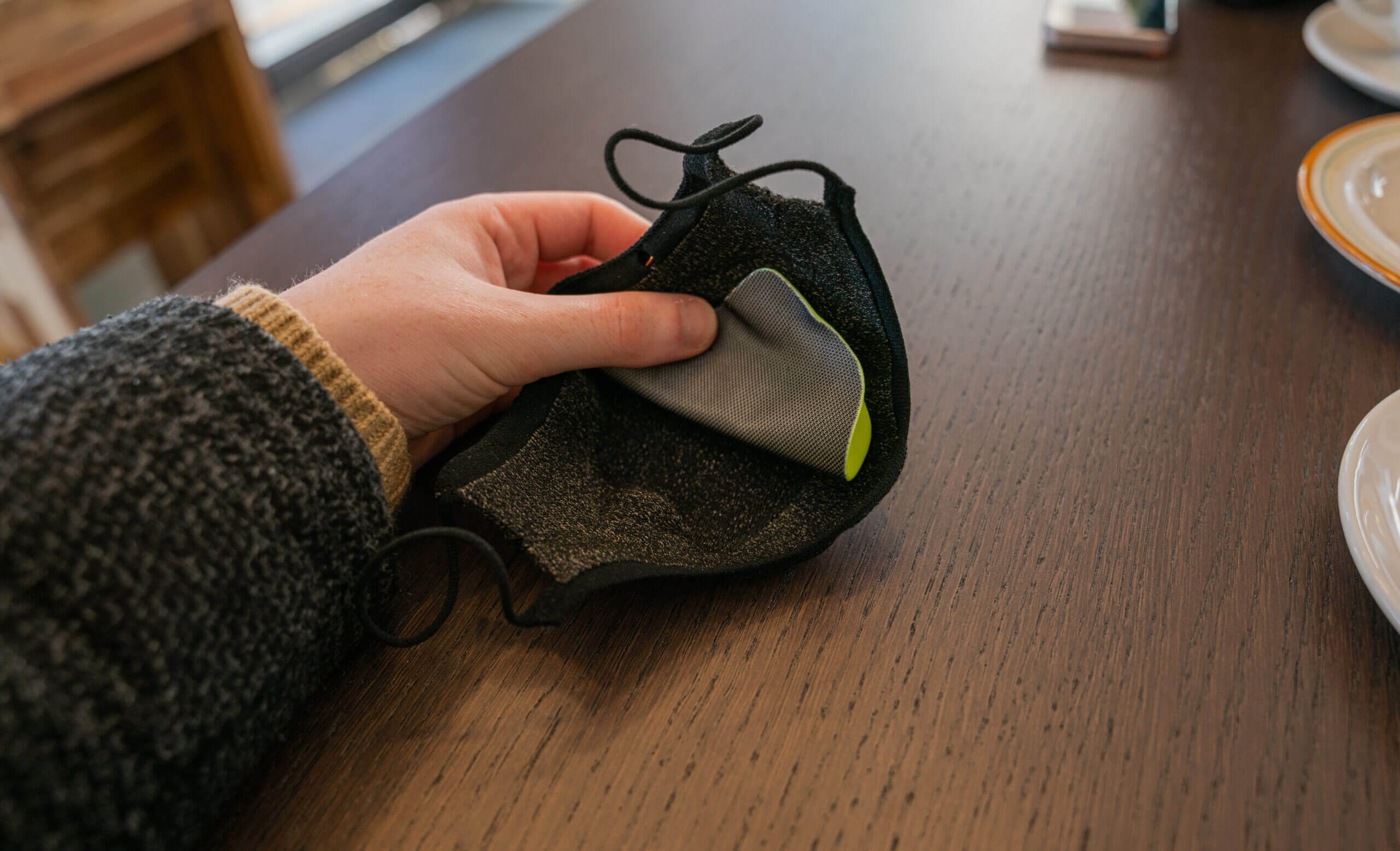
Overall, the Kangaroo Mask from Bilio is a mask with considerable strengths and weaknesses. The mask is very comfortable, making it easy to wear for hours on end. This is a big advantage since masks are essential for many people in 2022.
However, at the same time, the fact that the filter doesn’t have a proper mounting mechanism makes this mask hard to recommend. I’m unsure if this was an issue with my particular mask and filter sheet or whether this is widespread. If I can get my hands on another Kangaroo Mask in the future, I will update this article accordingly.
With the filter easily being displaced and regularly popping out of the mounting holes, I can’t wear this device regularly. Luckily, it seems as though this issue could be an easy fix. If Bilio could make some changes to ensure that the filter fits better and stays in place, I could see the Kangaroo Mask being a much better choice.
While the filtration still remains lower than most competing cloth reusable masks, having > 80% filtration puts it on a similar field (filtration-wise) to KF80, FFP1 and P1 devices. For this reason, I believe that the Kangaroo Mask sits above community face coverings such as those that adhere to ASTM F3502-21 but below respirator-level filtration devices.
With the usage of X-Static antimicrobial technology, it’s clear that this mask is intended more for viral protection than air pollution. For that reason, this device might be worth considering if you are looking for such a device. However, the lower filtration means that it isn’t ideal for air pollution.
Both the fit and comfort of the mask are strong points when the Boomerang is used alongside the mask. While I encountered some exhalation leaks, inhalation leaks were minor and easily adjustable.
The flexibility of the Kangaroo Mask is another strength. While the price difference between the filters won’t be worth it for many people, it’s nice to have the flexibility. Want more breathability? In need of a carbon filter? With Kangaroo Mask you have the flexibility. The only other mask that I have seen implement such a system as effectively is StyleSeal.
Learn More and Purchase Bilio Mask
Bilio Kangaroo Mask FAQ
What Is the Difference Between the Kangaroo and Koala Mask?
Bilio Mask’s Koala mask uses a built-in filter. On the other hand, the Kangaroo mask utilises replaceable filters.
Does the Kangaroo Mask Have an Official Certification?
No. The Kangaroo mask does not hold an official certification such as N95, KF94, KN95, etc.
Does the Kangaroo Mask Have Lab Testing?
Yes. The Kangaroo Mask has undergone lab testing by Intertek and SGS.
How Often Should I Replace Kangaroo Mask Filters?
Filters on the Kangaroo mask should be replaced every 3-4 days.
What Is the Difference Between Kangaroo Mask Filters?
AirFlow is the default Kangaroo mask filter. SilverFlow is a tier up and infused with silver for its antimicrobial properties. CarbonFlow includes a carbon filter.
Have Questions or Comments?
Join the discussion on the BreatheSafeAir Community Forum. Ask any questions you have about air quality or adjacent topics and get quick answers!